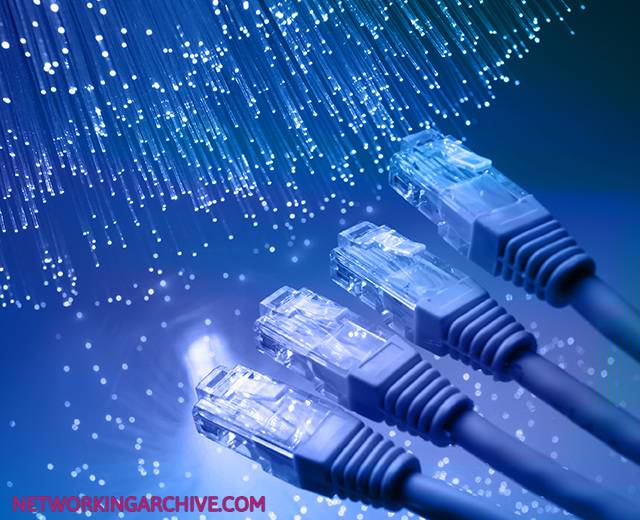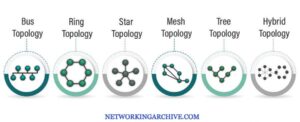What is Ethernet Technology? Definition and its Use

Ethernet technology is an emerging technology that provides data link and physical specifications. It is used in LAN networking scenarios.
Ethernet was developed by Xerox in the 1970s and operated at a speed of 2.94 Mbps. It was standardized by DEC, Intel, and Xerox, referred to as DIX.
In the mid-1980s, the Institute of Electrical and Electronics Engineers (IEEE) published the standard defined as IEEE 802.3, which operates at 10 Mbps.
What are the Ethernet Cabling Types?
Ethernet can be deployed in three types of cabling:
- Coaxial Cabling – This cables named Coax, consist of a single wire and is insulated by the shield. The shield protects it from Electromagnetic Interference EMI and attenuation. This type of cable is used in home television.
- Twisted-pair Cable – This type of cable consists of two or four pairs of copper wires. These wires are twisted with each other to reduce cross-talk. Twisted cables commonly called Ethernet cables are widely used in LAN technology.
There are several categories of twisted pair cables:
- Cat3 cables have three twists per inch.
- Cat5 cables have five twists per inch.
- Cat6 cables have six twists per inch and better insulation.
- Cat7 cables are the best on the market for data transfer.
- Cat8 cables are an enhanced model of Cat7 with greater speed.
- RJ45 connectors are used in twisted pair cables to connect any networking device.
- Fiber optics use light pulses for data transfer and are commonly used at the service provider end.
There are two types of Fiber Optics
- Singlemode fiber has a small core with a single ray or mode of travel, used for long distances. SMF has high speed over long distances, even in kilometers.
- Multimode fiber uses multiple modes of light to travel and is mostly used in data centers for short distances.
Also Learn: What is OSI Model | 7 Layers with Examples
What is The Ethernet Frame?
The Ethernet has the following frames:
- Preamble: It is 56 bits in the form of 1s and 0s that show synchronous communications.
- Start of Frame: It is 8 bits that show the valid frame of the network.
- MAC Destination: It is 48 bits, with 24 bits for the manufacturer of the network and the other 24 bits for the host address.
- MAC Source: It is also 48 bits that show which host is originating this frame.
- 802.1Q Tag: It is 32 bits that show which VLAN the frame belongs to.
- Ethertype or Length: It is 16 bits that indicate the length of the frame.
- Payload: It is 42-1500 bytes that depict the data payload.
- CRC (Cyclic Redundancy Check): It is 32 bits used for error detection.
- Interframe Gap: It is 96 bits required as an idle period for the transmission of a frame to allow the host to be ready for the next frame.
What are CSMA/CD and Half-Duplex Communication?
Ethernet was developed to share the medium for multiple devices in the network
There are two methods of communication medium:-
- Half-Duplex: In half-duplex communication, a host can send or receive data, but not simultaneously, because Carrier Sense Multiple Access with Collision detection is used to control media access. In this case, data can be sent when the link is idle and the interframe gap has expired.
- Full-Duplex: In full-duplex communication, a host can send and receive data simultaneously. To reduce collisions, a backoff process is used.
What are the Ethernet Categories?
Ethernet standards have been revised for speed, longer distances, and new hardware technologies. The categories based on speed are as follows.
- Ethernet (10Mbps)
- Ethernet (100Mbps)
- Gigabit Ethernet
- 10 Gigabit Ethernet
Physical standards are labeled by their transmission rate, signaling type, and media type. For example, in 100baseT, 100 is the transmission rate, base is the baseband transmission, and T means twisted-pair cable.
- Ethernet 10Mbps depicts the IEEE standard 802.3a with a speed of 10 Mbps on coax, twisted pair, and fiber cable.
- Fast Ethernet 100Mbps depicts the IEEE standard 802.3u with a speed of 100 Mbps on twisted pair and fiber cabling.
- Gigabit Ethernet 1000Mbps depicts the IEEE standard 802.3ab with a speed of 1000 Mbps on twisted pair cable and 802.3z on fiber cable.
- 10 Gigabit Ethernet depicts the IEEE standard 802.3an with a speed of 10000 Mbps on twisted pair and 802.3an on fiber cable.



